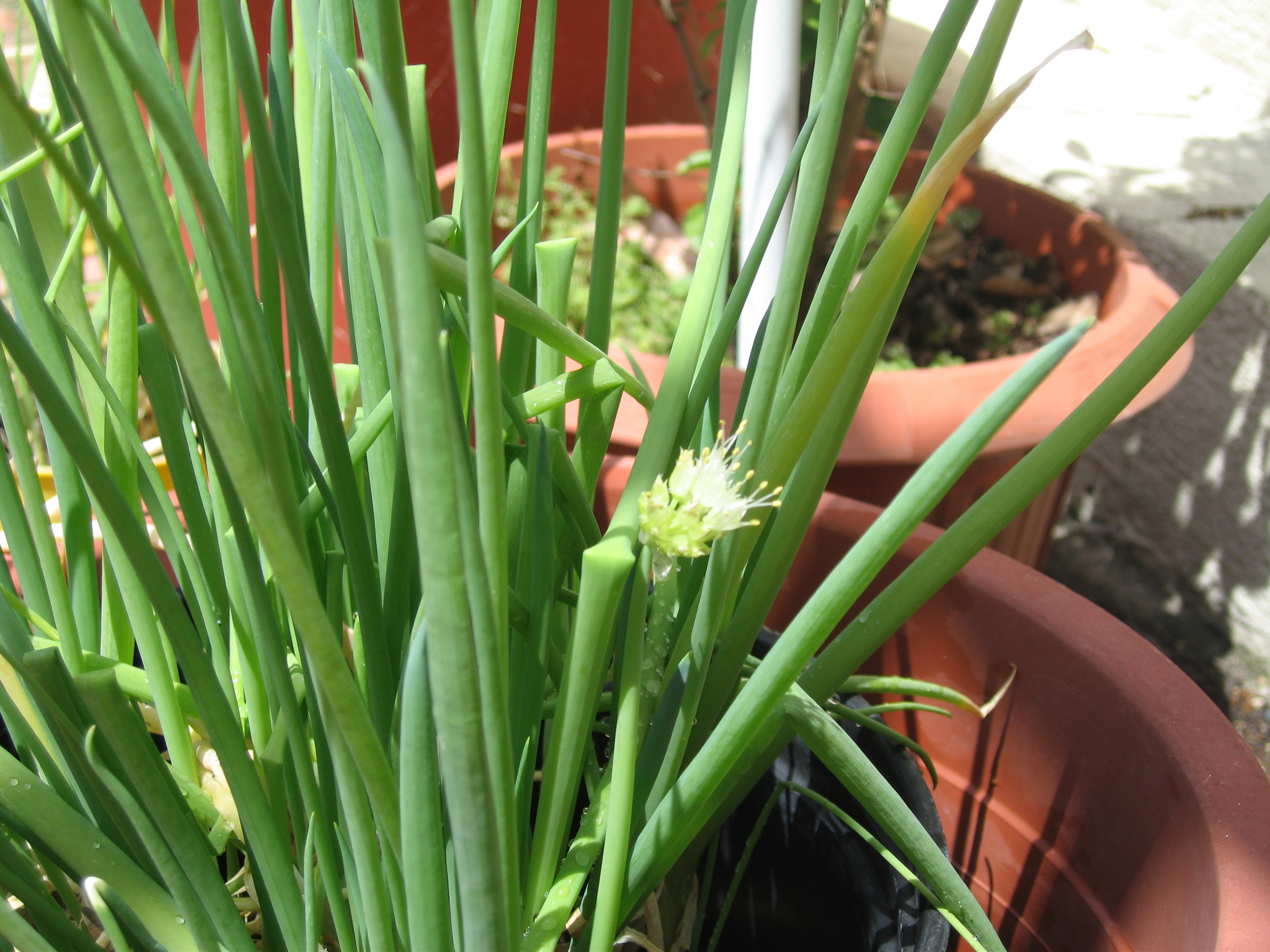Printable Version (PDF)
Green Onions
 |
| Source: Wikimedia Commons |
Save the last inch or two with the bulb and roots. Place the end in a jar of water and keep it in a sunny but protected spot. Replace the water every few days. Within a day, it will begin to regrow.
Once several inches have grown out, you can harvest the green onions. You can get a few harvests before production begins to slow and the onions are less flavourful. At this point, or once new roots have grown to at least a half-inch, pot up your green onions in some potting soil mix and a pot at least 6 inches deep or plant in the ground.
You can do the same with leeks, spring onions, fennel, and lemongrass.
Ginger
 |
| Source: Thamizhpparithi Maari [CC-BY-SA-3.0] via Wikimedia Commons |
Cut off a small chunk of ginger and plant it in soil with the newest buds facing up. Place the pot in a sunny but protected spot. Before long, the ginger piece will begin to regrow shoots and roots.
Once the plant is established and you are ready to harvest, pull up the whole plant from the soil, including the roots. Take care not to damage the new roots. Remove a piece of ginger and replant the whole thing to continue the process.
Potatoes
Pick a potato that has many well-formed eyes. Cut it into 2- to 3-inch pieces, making sure that each piece has at least 1 to 2 eyes on it. Leave the cut pieces out at room temperature for a day or two to allow the cut areas to dry (and help to prevent rotting after planting).
Plant your potato pieces about 8 inches deep in fertile soil with compost mixed in. Cover the potato pieces with 4 inches of soil and leave the remaining 4 inches empty. As the plant begins to grow and more roots appear, add more soil.
You can do this with any variety of potato, including sweet potatoes (though these can take a long time and may not even produce new sweet potatoes).
Celery
Cut the leaves and stalks off to about an inch above the roots (the flat part of the celery where the stalks join). Place the root end in a dish of water, but make sure that the rest of the plant is not submerged. Put the dish in a sunny area and spray it with water a couple of times a week to keep the top of the plant moist.
New shoots will begin growing from the centre of the cut end, while the cut stalks will slowly brown and fall away. Once the celery plant is a couple of inches tall and established, plant it in soil.
You can also do the same with lettuce, bok choy, and cabbage. It isn't necessary to plant the lettuce in soil, but if you do, the leaves and plant will grow to a much bigger, fuller size.
Onions
Onions are one of the easiest vegetables to grow from cut-off scraps. Just cut off the root end of an onion, leaving about an inch of onion above the roots. Allow the cut piece to dry for a few hours in a shaded, well-ventilated area to let the onion callous a bit. Place the piece of onion with the root end down into soil. Cover with 1 to 2 inches of soil and water as needed.
Garlic
 |
| Source: Matt Frederick [CC-BY-2.0] via Wikimedia Commons |
Simply plant a clove, skin and all, with the root end down (the hard, sometimes indented, part). Place the plant by a sunny window. Water as necessary, and wait.
Once the plant is established, cut back the shoots. The plant will put its energy into producing a garlic bulb. To continue the process after harvest, just save one of the cloves and pot it up.
You can regrow a whole garlic plant from a single clove. Both the cloves and the shoots from the bulb are edible.
Basil
Save a few sprigs of basil and trim the stem below (at least one) a node. Make sure the stem has not hardened and turned woody. Pick off the sets of leaves, keeping just a couple of pairs at the top of the stem. Pinch off any flowers that have formed or are beginning to form.
To root the cutting in water, place the stem in a glass and cover the stem until just above the node with water. Place the glass in a sunny spot, changing the water every couple of days and topping up as needed.
To root the cutting in soil, stick the stem into a pot with potting mix until the soil covers the top of the node. Place the pot in a sunny spot and water to keep the soil moist.
Roots will begin to form after a week or so. If growing in a pot, make sure it is at least 7 inches deep, as basil has long roots. You can transplant the basil when it has established and grown at least 2 sets of leaves.
You can try this with other herbs like thyme, oregano, and rosemary. Parsley will not root from cuttings.
Have you been wanting to try your hand at food gardening but been hesitant to make the commitment of buying seeds, planters, soil, and other materials? Gardening from kitchen scraps provides an easy, low-cost way to explore food growing (and to occupy -- ahem, involve -- kids with growing experiments).
Resources
Apartment Therapy, “How to Clone Your Herbs”
Mrs. Happy Homemaker, “15 Foods That Can Be Regrown From Scraps”

